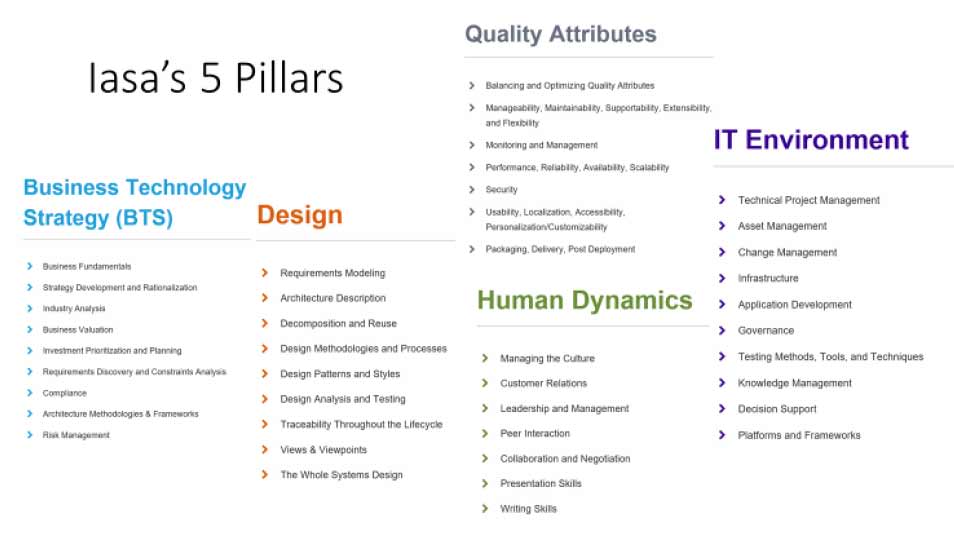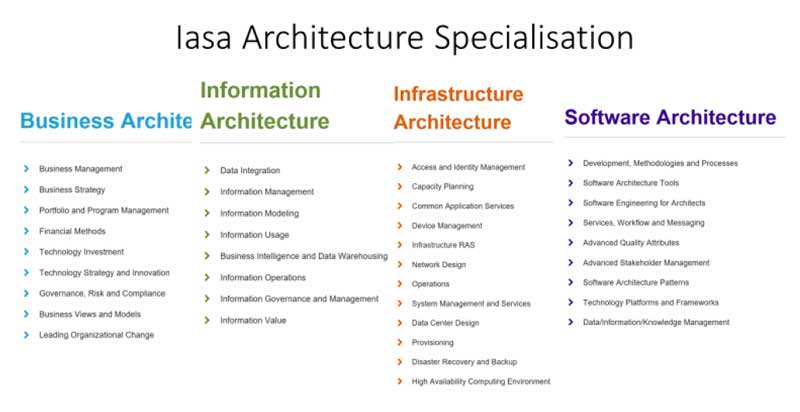Enterprise architecture is a big proponent of enterprises effectively leveraging what they have.
I have met many IT professionals who are stuck on their career path and looking for an alternative career progression in their IT professions. If you are one of these, this article would be useful and relevant in presenting Enterprise Architect as the new career option to go for, because of the high demand for his skills and expertise.
Today, a majority of enterprises are embarking upon their digital journey and they need professional skilled talents to be a part of their Digital Transformation team. A capable enterprise architect is a rare and valuable resource and our industry is not fast enough at churning out this talent.
So, it is extremely difficult to hire good enterprise architects, but what I see many organisations do is look at potential candidates within the organisation. Look to your mid-level IT professionals – are they getting excited and interested in understanding the business? Are they interested in whether new IT solutions would deliver value for business users in the organisation?
Basically anyone in your organisation who has interest in the business and in contributing IT values, would be an ideal candidate. However, it is up to the management to enable and equip them with the right job requirements, skillsets and send them for training with professional architect certifications.
As an organisation what do you look for? And as an IT professional what can you do to ready yourself and take your career to the next level?
Formalising the definition – IASA and The Open Group
Enterprise architecture skills are in huge demand, but it suffers from poor definition. On top of that, to many people and organisations, the enterprise architect means someone who technology-focused like a super techie, a super programmer or a super engineer. As a result there is lack of uniformity when it comes to an organisation’s job requirements when hiring an enterprise architect.
These inconsistent skills requirements when organisations want to hire, makes it nearly impossible for individuals to prepare themselves with the right experience and competency development.
What skills do they need?
What experience should they gain at work?
Where do they start?
Whom shall they learn all these skills?
Despite this, IASA, the global professional body for all IT architects as well as The Open Group have more or less identified the desired skills and certifications that is needed for IT professionals to embark upon a meaningful and rewarding career transformation path as enterprise architects.
The Open Group defines the TOGAF Architecture Skills Framework to ensure the alignment of staff skills and experience with the architecture tasks. They also provide definitions of the architecting skills and proficiency levels required of personnel, internal or external, who are to perform the various architecting roles defined within the TOGAF Framework. The benefits anticipated include reduced time, cost and risk in training, hiring, and managing architecture professionals, both internal and external.
IASA focuses on the skillsets based on the ITABoK (IT Architecture Body of Knowledge). The ITABoK is a living depository of knowledge, standards, experiences and best practices maintained by Enterprise Architect practitioners for Enterprise architects. There are five foundational pillars to the ITABoK which encompasses five skillsets – Business Technology Strategy, Design, Quality Attributes, IT Environment and Human Dynamics – that an Enterprise Architect should be equipped with.

These five pillars also span across the architecture specialisations recognised by IASA – Business Architecture, Information Architecture, Infrastructure Architecture, and Software Architecture.
There is also the Solution Architect, who needs to be well-versed in all the above four domains.
Thanks to rigorous detail of the ITABoK, the aspiring Enterprise Architect now has more guidance and would be able to focus upon developing the specific required competencies to be a successful Enterprise Architect.

The Enterprise Architect in the enterprise
In my experience, for a start, it’s possible that you have one or two budding “enterprise architects” or someone who is informally double-hatting with duties of the Enterprise Architect, in your organisation; you can identify them because they would have the common goal of delivering IT values for the business. Chances are that they are also having meaningful discussions with the business-side of their organisation, understand business objectives and how IT can be used to achieve them.
His communication skills will be put to the test many times, as he also has to be an influencer, negotiator and conflict resolver. This is because an enterprise architect is often viewed as a moderator between business and IT.
Very often he has to talk the language of business while he is thinking of a solution by IT, and then he has to lead both sides to some kind of middle ground that benefits both Business & IT and at same time bring the whole organisation closer to achieving its business strategy goals.
That is why he is also an enterprise trouble-shooter and juggler, having to communicate the expectations of all key stakeholders in the enterprise, align their expectations while at same time define the target architecture of the organisation (framework, standards, processes, implementation, governance), through the creation of a Digital Enterprise Architecture Map and be able to adapt the Map as and when requirements change, while still keeping the organisation’s course steady towards achieving its strategic objectives.
In addition, he must also possess and have strong interest in a domain business knowledge as a mandatory requirement to be a successful enterprise architect. Knowledge of the industry and landscape that your organisation operates in, is invaluable towards bridging business with IT, for example when it comes to how to handle data in regulated industries like financial services.
What to avoid
By now, you may have noticed how much intermediation the enterprise architect has to do, between all the stakeholders – the EA professional is someone who has a lot of exposure when it comes to solving many business and IT problems and is able to troubleshoot the business and come to a strategic decision that is win-win for both parties.
The EA professional has to be on-the-ground meeting people, instead of being in an ivory tower that may be too high to exert concrete influence over the organisation.
The EA professional is also not a beat cop who is on the prowl to enforce best practices or conduct code reviews. Neither is he a jack-of-all-trades, taking on the role of project management and doing a 1001 things which ultimately achieve nothing of value at all.
Preparing for the future
Ideally, the industry expects that for one to become an EA professional, one would ideally have about ten years of Business and IT experience. However, with today’s wide availability of and easy access to knowledge and training certification courses provided by both The Open Group (TOGAF & ArchiMate) and IASA (CITA-F & CITA-A), anyone who has interest in digital transformation through establishing enterprise architecture as a culture can seriously begin their Enterprise Architecture professional career in a much shorter time frame.
I can see the demand for EA professionals growing exponentially in these coming years as we move away from the computerisation era towards the Digital Transformation era; organisations will need someone who can help them digitalise their entire enterprise so that it can reap the benefits of digitalisation like optimisation and growth.
That “someone” is called a Digital Enterprise Architect.
About the Author: Aaron Tan Dani is a thought-leader in Digital EA and he is also actively driving Digital EA adoption and currently he is the Chairman of EA-SIG, Singapore Computer Society aarontan@scs.org.sg, Chairman of Iasa Asia Pacific aarontan@iasahome.org and Chief Architect of ATD Solution aarontan@atdsolution.com







